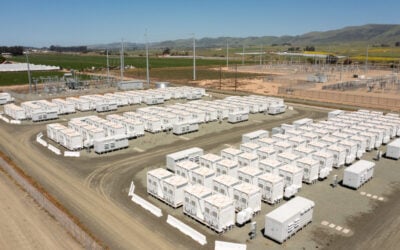The closing of Feed-in-Tariffs (FiTs) for solar installations in the Australian state of New South Wales (NSW) at the end 2016 presents a “perfect marketing opportunity” for energy storage retailers, according to industry members.
Craig Chambers market sector director, power generation of engineering design firm AECOM, told PV Tech that after a flurry of FiTs schemes brought into different Australian states four years ago, the NSW scheme, which accounts for around 160,000 homes, is the first to end.
Enjoy 12 months of exclusive analysis
- Regular insight and analysis of the industry’s biggest developments
- In-depth interviews with the industry’s leading figures
- Annual digital subscription to the PV Tech Power journal
- Discounts on Solar Media’s portfolio of events, in-person and virtual
FiTs will end in the different states as follows:
New South Wales - 2016
Tasmania - 2018
Western Australia – 2021
Victoria – 2024
Queensland – 2028
South Australia – 2028
Chambers said most consumers receive AU$0.2-0.6 (US$0.15 to US$0.44) under their FiT schemes. Consumers with a 2-5kW scheme system on their house in NSW, will be in a position to either install an energy storage system or return to the default power offered by the retailers. The majority of consumers on the FiTs scheme are also on gross meters, which means they are exporting most of their power. It is likely that many of them will move onto net-meters, said Chambers.
He added: “Some of [the consumers] may be coming to end-of-life of inverters, so it is probably the perfect marketing opportunity for those battery suppliers to say look we will upgrade your meter to a net-meter. We will also put a new inverter in which can support your battery system and we will provide a battery system as well.”
He said retailers and third party aggregators are already providing such schemes.
He added: “It is probably the first market in Australia where there is going to be these opportunities for on sellers to get these schemes in.”
Using a 6.5kW battery system for example, the main use will be to offset peak tariffs, by charging up the battery during the day, to be discharged between 4-8pm when electricity prices are higher, depending on the retailer and network. Chambers also said this is likely to see “mass interest” in NSW.
Similarly, John Grimes, chief executive of Australian Solar Council, told PV Tech that lowering battery prices are also making storage an attractive option for consumers, particularly those with larger PV systems.
He added: “That is the next big wave in the Australian sector.”
Sam Wilkinson associate director, Solar Supply Chain and Energy Storage at IHS technology, told PV Tech: “In general, the cost of generating your own solar electricity is highly competitive compared with retail electricity rates. This drives homeowners to be interested in providing as much of their electricity via solar on their roofs as they can, and are therefore interested in storing excess electricity rather than feeding it in to the grid.”
IHS predicts that over 200MW of residential PV systems in Australia will have energy storage added over the next 5 years.
South Korean appliance manufacturers LG Chem recently launched a new 6.4kWh battery storage system at around US$1,000/kWh, tipped to be a main competitor of the Tesla Powerwall in the storage market. The LG battery is expected to be made available on the market in the coming weeks.
After a flurry of FiTs schemes brought into different Australian states four years ago, the NSW scheme, which accounts for around 160,000 homes, is the first to end.. Flickr: Chris Baird






